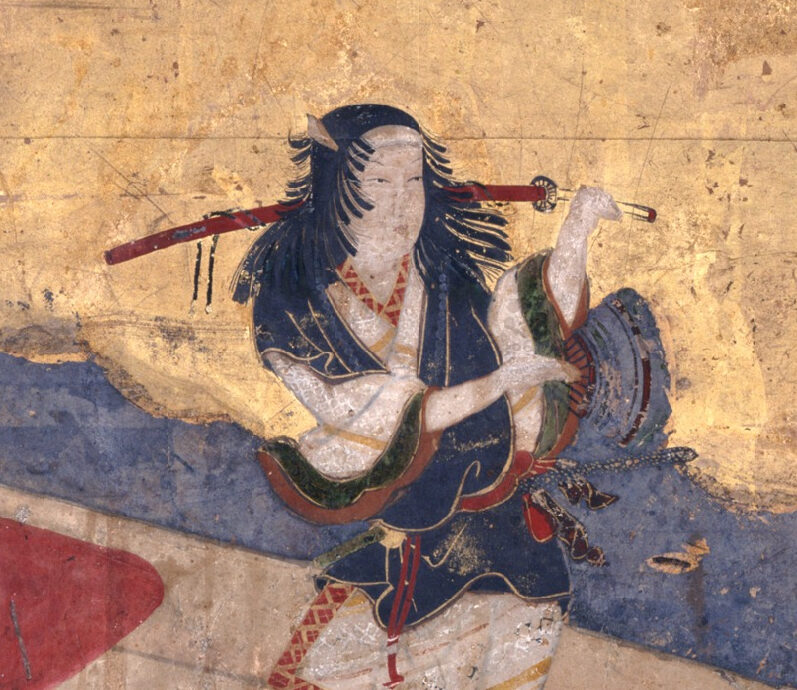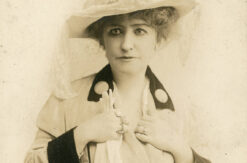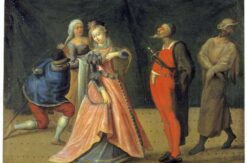Picture credit: Wikimedia Commons. (Public domain)
[Note: I am re-posting some short articles I wrote for Theatre Unbound's website many years ago. Read the full series.]
Kabuki was invented by a woman.
Izumo no Okuni (1572?-1620?), or “Okuni from Izumo”, was a dancer at the Shinto shrine in Izumo in Shimane Prefecture, Japan. Around 1603, she developed a new style of performance which included both dancing and short satirical skits. Some of the leading characters in these skits were based on kabuki-mono or “eccentric people”, defined by Yoko Takakuwa as “young men with ‘unusual’ (but perhaps fashionable) clothes and hairstyles,” who “put up group resistance to the new political institution which [the shogun] Tokugawa [Ieyasu] keenly strove to inaugurate.” In 1606, Tokugawa took action against the kabuki-mono. Takakuwa says he “regulated” them. Galia Todorova Gabrovska says he “executed” them.
Okuni specialized in kabuki-mono male roles.
In 1629, the Tokugawa Shogunate banned women from the stage, claiming that fights were breaking out in the audiences among rivals for the alluring actresses’ sexual favors. All-male troupes began performing kabuki (whereupon fights broke out in the audiences among rivals for the alluring actors’ sexual favors). Kabuki remained an all-male domain for more than 250 years.
Further reading:
Ariyoshi, Sawako. Kabuki Dancer (Tokyo; New York: Kodansha International, 1994 (1972)).
Gabrovska, Galia Todorova. “Onna Mono: The ‘Female Presence’ on the Stage of the All-Male Traditional Japanese Theatre.” Asian Theatre Journal 32, no. 2 (2015): 387–415. http://www.jstor.org/stable/24737038.
Kominz, Laurence R. “Origins of Kabuki Acting in Medieval Japanese Drama” in Samuel L. Leiter, ed. A kabuki reader: history and performance (New York: M.E. Sharpe, 2002).
Takakuwa, Yoko. “Performing Marginality: The Place of the Player and of “Woman” in Early Modern Japanese Culture.” New Literary History v. 27 no. 2 (1996), pp. 213-225.



